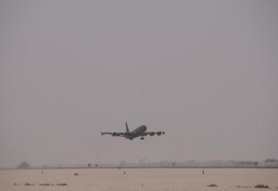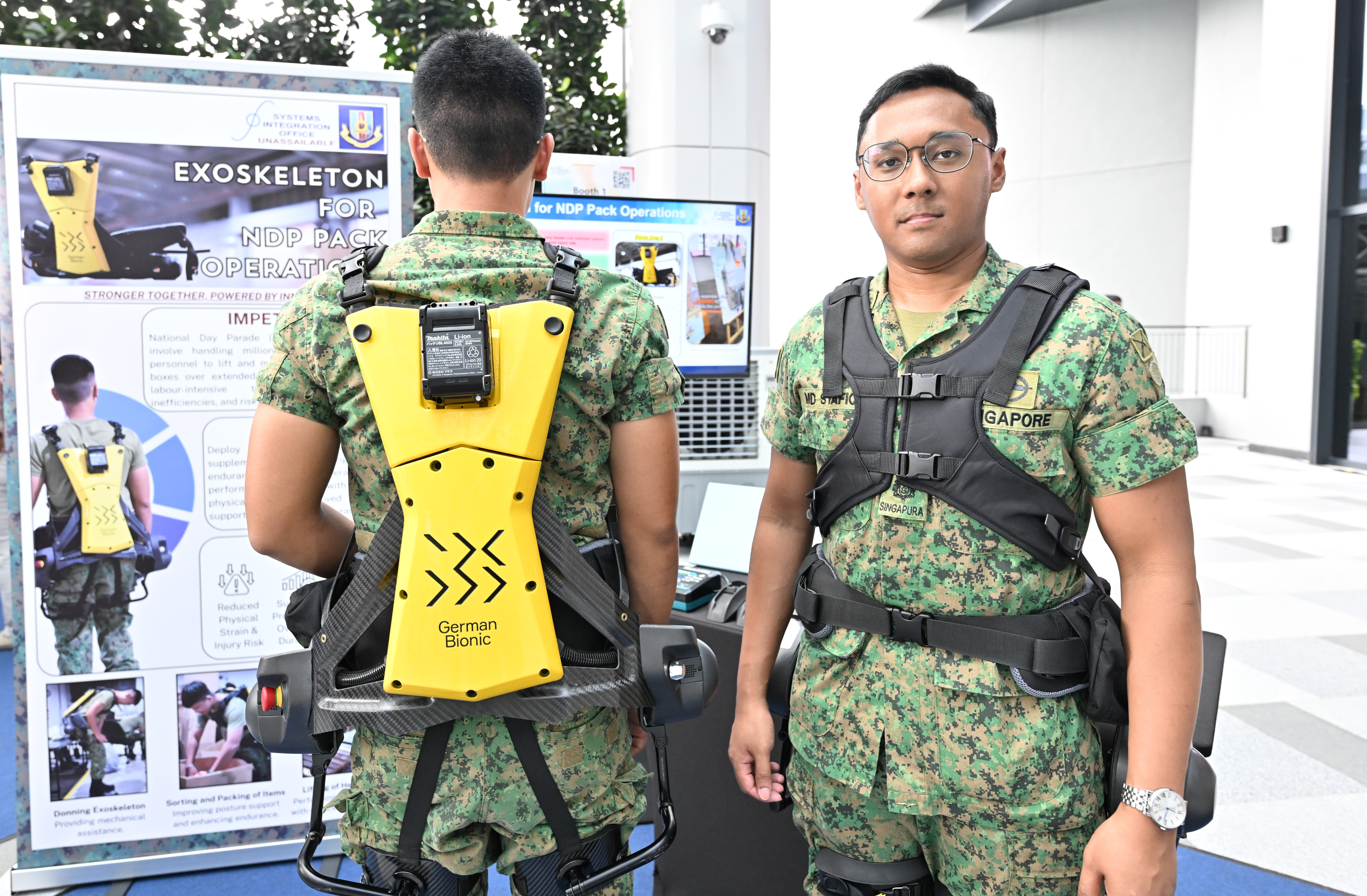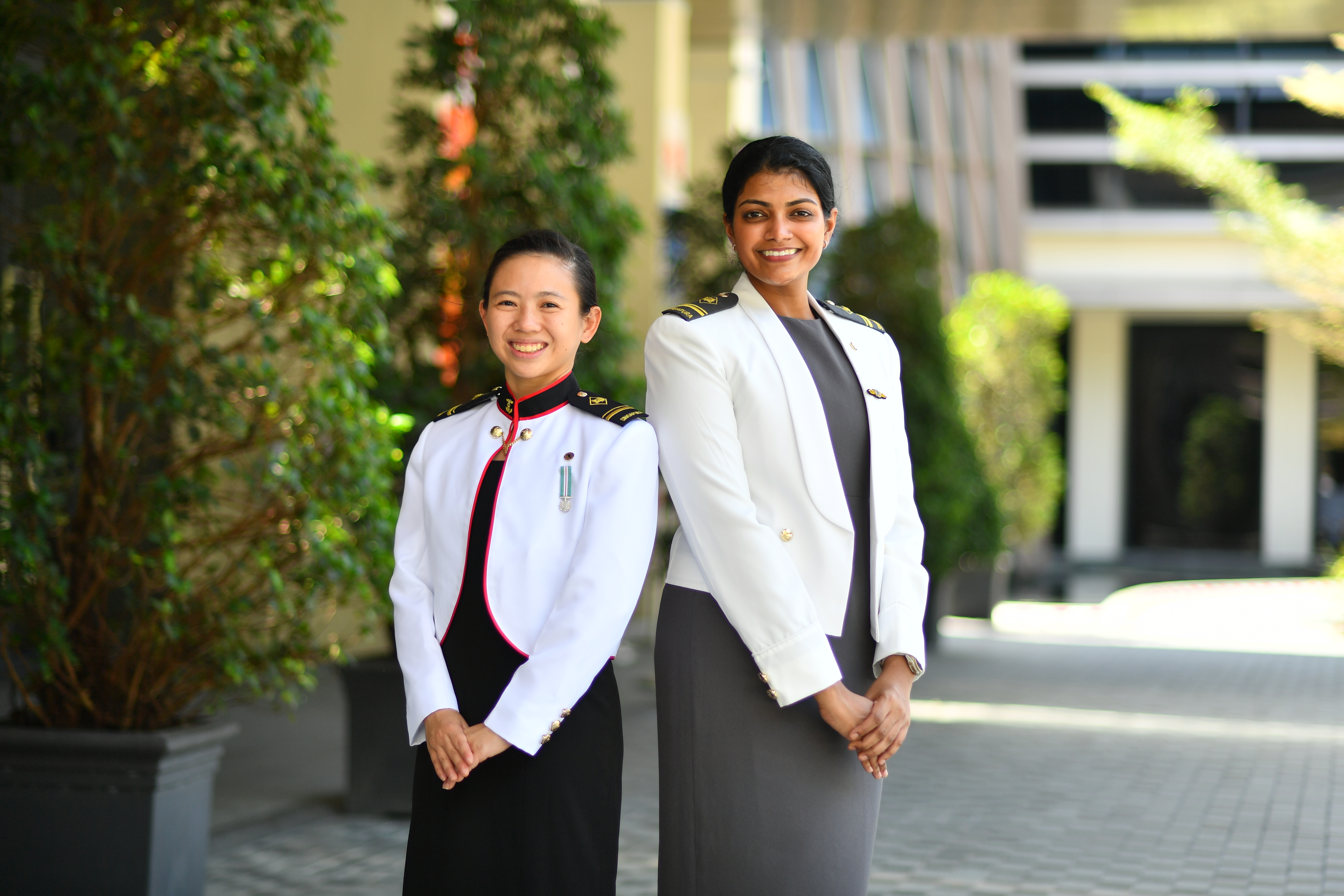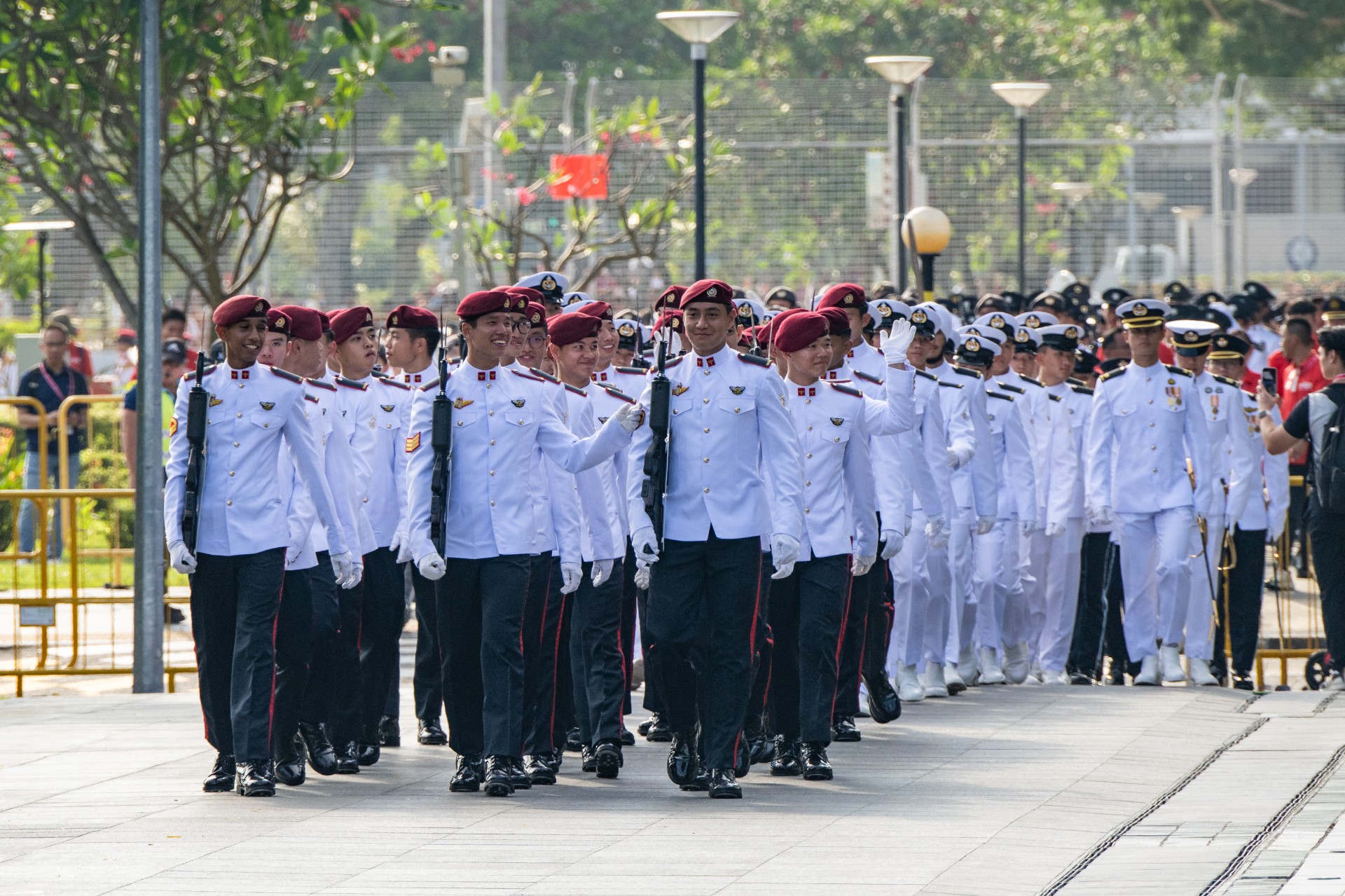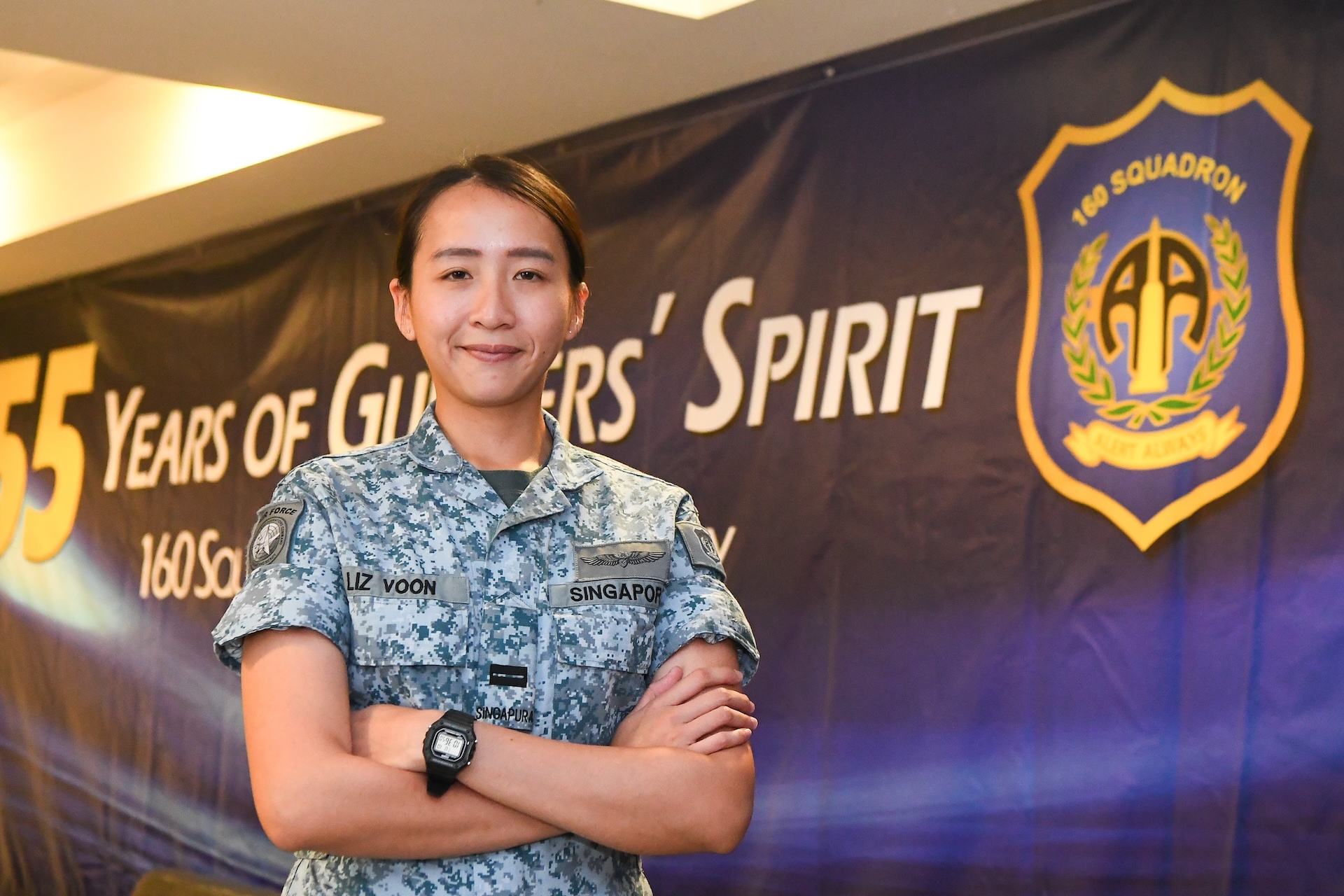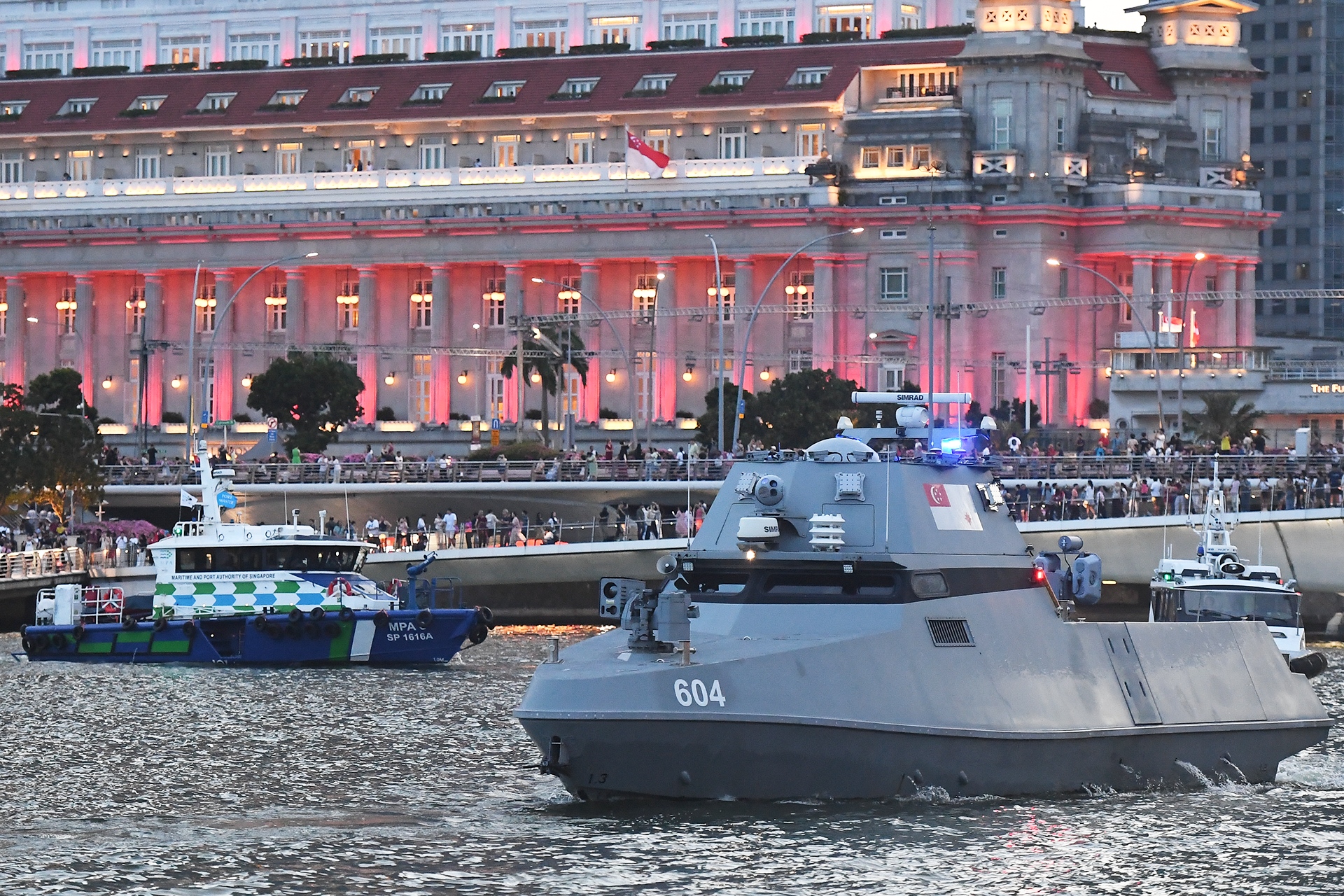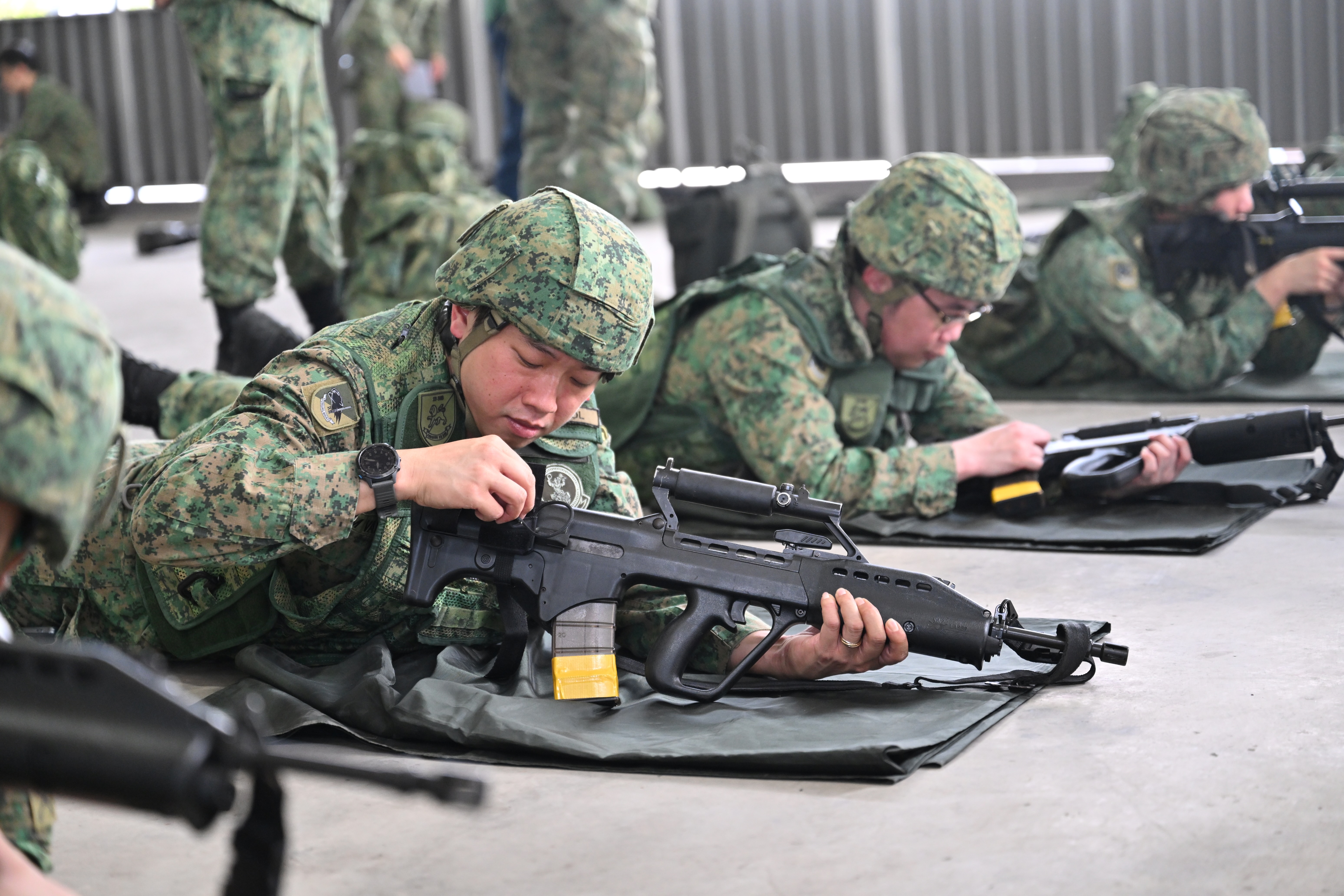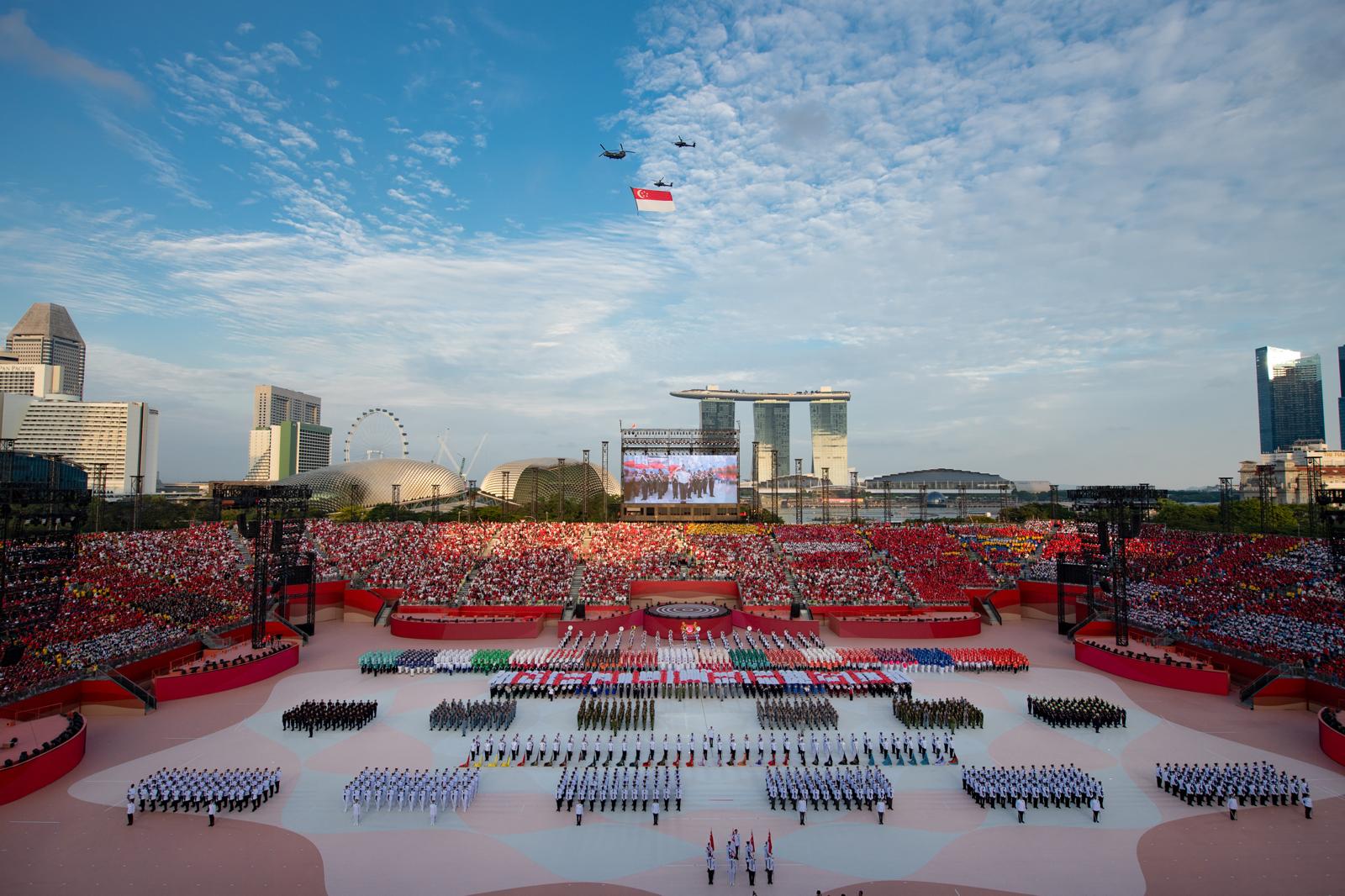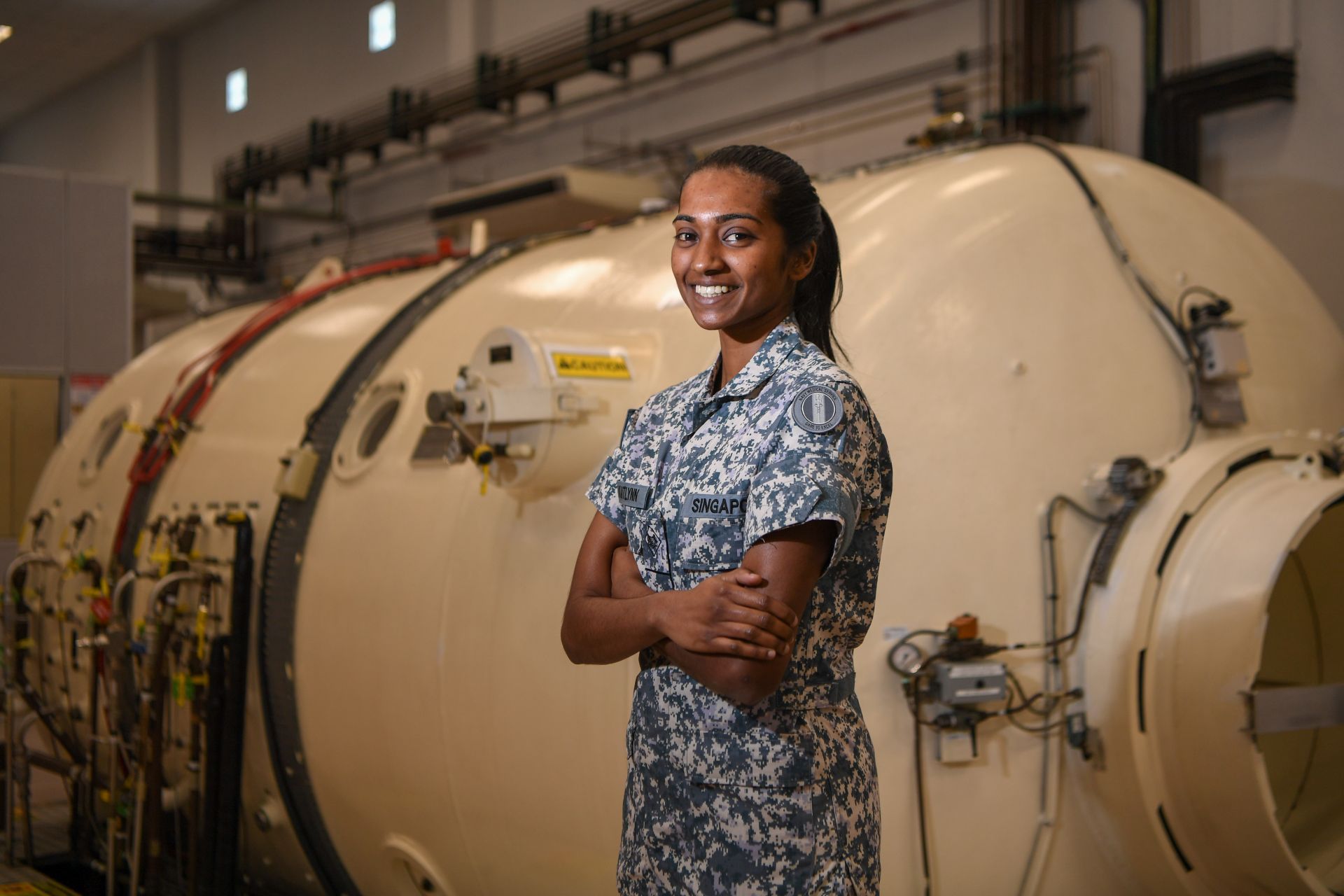MISSION SUCCESS - RSAF TANKER AIRCRAFT IN THE GULF
PHOTO // PicturesAloysius Tan and contributed the RSAF
In a globalised world where cooperative efforts among countries are becoming ever more important, the modern military plays an essential role in providing international aid. Two servicemen returning from the latest KC-135 detachment share with PIONEER their experiences in the Gulf.
For the past five years, Sin gapore has sent several deployments overseas as part of its on-going contributions to the multi-national reconstruction efforts in Iraq and Afghanistan. Since 2003, the SAF has made five deployments of KC-135 tanker aircraft, four deployments of Landing Ships Tank and one deployment of a C-130 transport aircraft to the Gulf.
Working in a dynamic environment
For the crew of the KC-135 tanker aircraft, their three-month stint in the Gulf was characterised by a complex and dynamic operating environment. Long 12-hour days were frequent for the team of 36 servicemen from the Republic of Singapore Air Force (RSAF) who provided air-to-air refuelling support for coalition forces.
Detachment commander, LTC Zakir Hamid, who was on his third deployment to the Gulf, explained the importance of the operation: "Air-to-air refuelling is crucial to operations or sustained flying. It provides the receiver aircraft with the benefits of carrying a heavier payload, as well as extended range and endurance."
Transferring fuel from a tanker to a receiver aircraft in mid-air is no easy task, especially when both planes have to fly in close proximity of each other, while travelling at high speeds of over 500 kilometres per hour.
"It is certainly a highly-challenging procedure which requires skill, precision and composure," added LTC Zakir.
The process is also complicated by the region s arid climate, where temperatures can soar to above a scorching 40 degrees Celsius in the day. A myriad of variables such as dust and sandstorms, strong winds and restricted night visibility were some of the other day-to-day challenges which the crew had to handle.
According to pilot LTA Ashley Jude Peterson, who was operating in the Gulf for the first time, the crew always had to be "on top of the situation."
"In the air, I had to get the aircraft to where it was supposed to be on time, every time, despite receiving many real time changes," he said. "This is as real as it gets. We re no longer in a training environment."
Mission-ready
What, then, enabled these servicemen to complete their missions effectively in such a demanding environment?
As LTC Zakir put it, "the ability to react and respond to these challenges quickly and safely each and every time is imperative to achieve mission success."
Meticulous planning prior to a flight was critical in ensuring greater situation awareness and threat management. This would bring every member up to speed about the mission and the potential risks that they might encounter.
Indeed, LTA Peterson revealed that their daily routine usually began with a thorough intelligence brief which covered threat analysis as well as logistics updates featuring their aircraft status.
As LTC Zakir put it, "the ability to react and respond to these challenges quickly and safely each and every time is imperative to achieve mission success."
Meticulous planning prior to a flight was critical in ensuring greater situation awareness and threat management. This would bring every member up to speed about the mission and the potential risks that they might encounter.
Indeed, LTA Peterson revealed that their daily routine usually began with a thorough intelligence brief which covered threat analysis as well as logistics updates featuring their aircraft status.
This was followed by a comprehensive mission brief about flight routes, operations, emergency drills, weather and threat mitigation procedures.
Even after the mission was successfully launched, the crew s job was still not over.
A post-flight debrief would be conducted, where the team would go over the entire mission, exchanging pointers and tips.
"The team continually sought ways and means to improve the way we did our core duties, by virtue of the culture of excellence the SAF has imbued us with," noted LTC Zakir.
Pre-deployment preparation
Clearly, preparation is the key to maintaining a mission-ready state.
To that end, intensive pre-deployment training was provided for the team several months before they left for the Gulf.
The crew engaged in a holistic training regime, which ranged from operational tactics, contingency training and desert survival, to language competency and cultural awareness.
"There are always threats out there, but we have been well-trained and equipped to deal with them," said LTA Peterson. "All the necessary measures and planning enabled us to minimise risk and mitigate the threats out there."
To give the servicemen s family members greater peace of mind, the RSAF held talks with them to explain the intricacies of the mission and to ease their concerns.
"This allows our servicemen to be both psychologically and physically prepared for their mission," explained LTC Zakir.
LTC Zakir reuniting happily with his family at the team s homecoming on 14 Jul.
Home is where the heart is
Of course, welfare was also one of the foremost priorities in sustaining high morale and maintaining peak performances.
The crew were accorded sufficient time to rest before their next assignment, as well as participate in recreational and cohesion activities organised at the base.
More importantly, the detachment ensured that all personnel had the same "home" feeling while being deployed, said LTA Peterson.
"Occasions such as SAF Day, promotions and personnel's birthdays were observed and celebrated," he added.
On top of that, during their three months abroad, the crew were also given pre-paid cards to call home, as well as access to internet and video-conferencing facilities. This allowed them to keep in constant contact with friends and loved ones back home.
A sense of accomplishment
One of the key takeaways from the deployment for LTC Zakir was the valuable operational experience he had gained through operating in a non-benign environment, "where the threats are real and each and every mission is critical to the success of a campaign."
"Working with the most advanced air forces in the world, such as the United States Air Force, allowed us to benchmark ourselves against the best air forces in the world."
Another positive outcome from the mission was the forging of closer ties with other military forces. Recalling those three months, LTA Peterson said: "We worked hand-in-hand with our partners to achieve a common goal."
Besides interacting with coalition partners for information sharing, logistics support, flight planning and operations coordination, the team also built bonds with their foreign counterparts during cohesion activities and recreational events.
Citing one such instance, the pilot recounted how they attended a barbecue hosted by other coalition partners and reciprocated by holding a mid-term rotation dinner for them.
Lastly, and perhaps most importantly, the crew were glad to note that their efforts had made an impact on re-building and stabilising the country.
"Every mission is different, each unique with its own highlights," concluded LTC Zakir.
"Hearing reports and news on the progress taking place in the reconstruction of Iraq is heartening."
